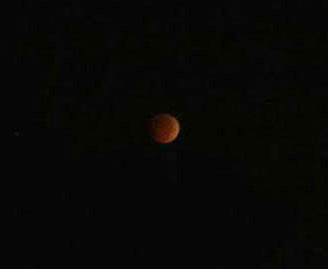“Blood moon” lunar eclipse shines in the early morning

October 8, 2014
Michiganders were able to witness a rare sight at 5:15 a.m. on Oct. 8, 2014: a total lunar eclipse.
A lunar eclipse occurs when the moon passes into the shadow of the earth, which is divided into two parts: the umbra, the darkest part of the shadow where no light from the sun comes through, and the penumbra, where only a portion of light comes through. For this to happen, the sun, Earth and moon must be aligned in a straight line.
There are four types of lunar eclipses: a penumbral eclipse, a total penumbral eclipse, a partial lunar eclipse and a total lunar eclipse.
A penumbral eclipse happens when the moon passes through the penumbra, and it causes the moon to have a slightly darker color. A total penumbral eclipse is when the moon lies exclusively in the penumbra. The side of the moon closest to the umbra is darker than the other side.
A partial lunar eclipse appears when only a portion of the moon enters the umbra. But what residents of the western hemisphere witnessed was a total lunar eclipse, where the moon actually travels inside of the umbra. These can last up to four hours depending on where the moon was positioned upon entering the umbra. The moon can turn to a very dark color during this time, and it’s referred to as a blood moon due to its deep red color.
This eclipse is the second eclipse in a tetrad, a rare sequence of four consecutive total lunar eclipses. The first occurred on April 15, 2014, and the last two eclipses will occur on April 4, 2015 and Sept. 28, 2015.











